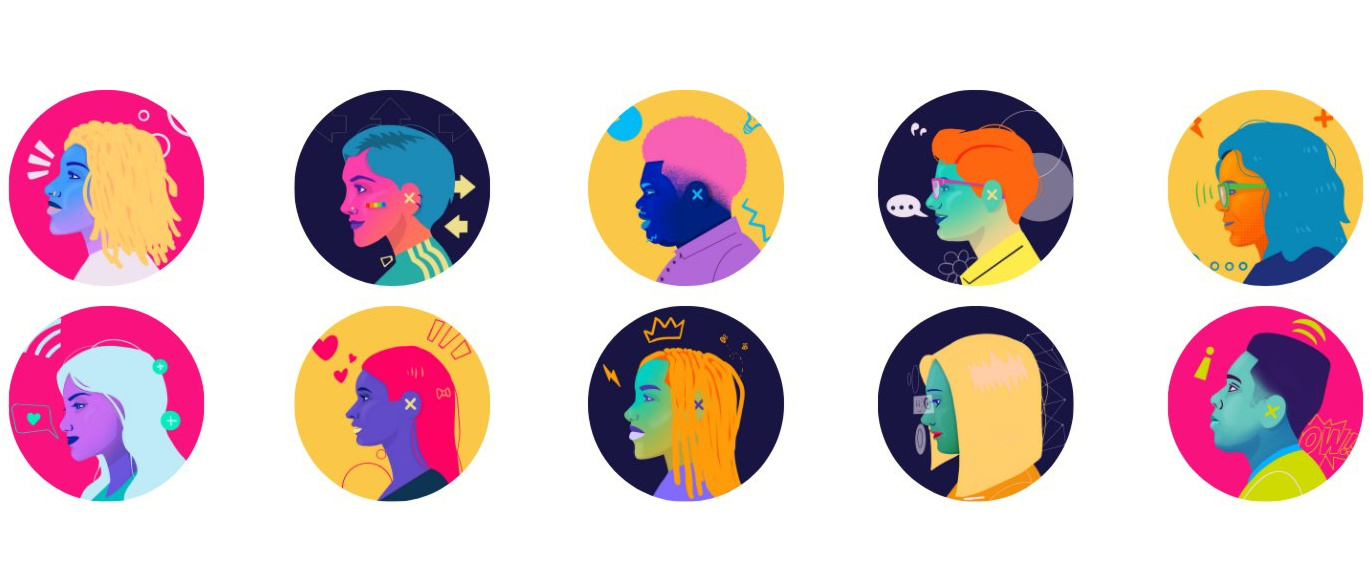Headstream's Inaugural Accelerator and Youth 2 Innovation Program took place against the backdrop of the COVID-19 pandemic and a global movement for racial justice, which together, gave the programs a more profound and urgent sense of purpose.
PROGRAM
HEADSTREAM
LOCATION
UNITED STATES
On Thursday, Sept. 10, SecondMuse’s youth mental wellbeing innovation program, Headstream, celebrates the close of its inaugural Accelerator and youth innovation program. The Headstream Innovation Festival also marks the end of six whirlwind, historic months that gave new urgency to Headstream’s already-timely mission.
The case for a program devoted to building richer, more meaningful digital experiences for young people, has been compelling from the start: Children and young adults coming of age today are members of the most plugged-in generation in history. They are spending enormous chunks of their youth in digital spaces, often beyond the reach of caring adults who lack the digital fluency to keep up and offer them critical support when they need it.
“Two years ago, the narrative was: ‘Young people are in crisis, and we need to better understand how technology impacts youth wellbeing” said Headstream Director, David Ball. “We weren’t vilifying the popular platforms, but we were saying, ‘we need more empowering digital spaces designed for youth agency and wellbeing, now more than ever.”
Yet just as the inaugural Headstream Accelerator was getting underway this spring, two global events imbued the accelerator with even greater purpose: First, the COVID-19 pandemic forced much of the world to trade in-person experiences for digital alternatives. And just as the Headstream team was wrapping up interviews with the 20 teenagers who would serve as critical advisors to the innovators through the Youth 2 Innovation program, the police killing of an unarmed Black man set off a global movement for racial justice.
“It’s a really interesting time in history to think about digital experiences for young people,” said Ball. “In many places, everyone is socially isolated and relying on technology for meaningful connections. At the same time, there is a racial justice movement and uprising that is causing people to turn to technology as a way to feel connected and to gain a sense of agency. When I think about the role played by the types of technology Headstream focuses on in the social, health and education sector — they all seem so critical now. Headstream really sits at the nexus of all these converging moments across the country.”
Y2I COMMUNITY: A WINDOW INTO WHAT DIGITAL EXPERIENCE COULD BE
These moments played out in real time in the powerful digital community forged through the Accelerator and particularly, Y2I program, where teens from across the country navigated the pandemic, the emotional experience of protesting for racial justice, and the strange reality of marking birthdays, graduations or the transition to college, without in-person interaction.
The Y2I community provided an inspiring window into what digital spaces can offer if they are both intentionally designed with youth wellbeing in mind, and put the needs and desires of underrepresented and often sidelined social technology users at the forefront.
Beyond building and advancing more meaningful social technologies for youth, Headstream is intent on shaping the broader culture of the economy driving that work. A key part of this mission requires Headstream to be intentional about justice for Black and Indigenous People of Color (BIPOC) in every aspect of its work — in the innovations it sources, the entrepreneurs it supports, the youth it empowers, and the community it brings together.
“Since the start of Headstream in 2018 we’ve focused on communities that are traditionally underserved, including BIPOC teens, LGBTQIA teens and teen girls. These communities have a critical need for more robust digital solutions,” Ball said. In all aspects of the program “we emphasized the importance of lived experiences in place of high academic degrees or fancy titles.”
Headstream’s work was guided by a cohort of 20 diverse teens from across the country who came together, virtually, to advise innovators and serve as guiding lights to the entire program, which in the end, exists to empower them.
But on top of providing crucial guidance to innovators, the group of teens wound up providing crucial guidance and support to one another as they navigated uniquely difficult times together in the sort of digital experience Headstream passionately aspires to multiply.
“After the first couple of weeks, they began demanding ‘hangout nights.’ So we created a zoom line, essentially, where everyone could gather, not to talk about work, but just about life,” Ball said. Though he personally only joined a few of the hangout nights, he was struck by the beauty of what he saw: teens of all ages and backgrounds — without any prompts from adults — reflecting on growing up, navigating challenges and even teaching each other poetry. “We created a space where they support each other, don’t feel isolated and feel empowered in their ability to have agency and to take control,” Ball said.
A VISION FOR MULTIPLYING AND MEASURING IMPACT
The Headstream Innovation Festival celebrates these 20 teens. It celebrates the 15 Innovators from the inaugural Accelerator, the beating heart of Headstream, who have been working to scale market-based solutions for young people in the social tech, ed-tech, and digital health sectors. (Or as Ball has put it: to scale solutions that are making the “internet a more beautiful, more accessible space where young people gain self confidence, emotional skills and the agency to be leaders as well.”)
These solutions include a social messaging app focused on close connections and private communities; an anonymous and safe social networking mobile app for peer support; a social-emotional learning platform for neurodivergent youth; and a web app that teachers, parents, social workers and other caregivers can use to support the emotional health of students daily, and from a distance.
The 15 Innovators worked hard over the course of the Accelerator to build solutions that were culturally appropriate for teens and to understand their impact pathway via a collaboration with Hopelab, a social innovation lab. “If you can demonstrate you have designed an impactful tool or innovation for a specific teen community, our belief is that the tool can be scaled effectively for a broader consumer base, but starting with a specific group at need is a viable business model,” Ball said. He also shared that Headstream is building its own impact measurement tool for innovators and investors that is expected to launch by early 2021.
The 20 Youth 2 Innovators, 15 entrepreneurs and community of 1,000 people forged through the inaugural Headstream Accelerator program is just the beginning. Details for Headstream’s next Accelerator cohort will be announced at the Festival, amid celebrations, networking, learning and reflecting on a historic year already altering both our digital and physical worlds.
“Now we are all using digital experiences to meet our basic human needs,” Ball said. “And young people are leading the way.”









